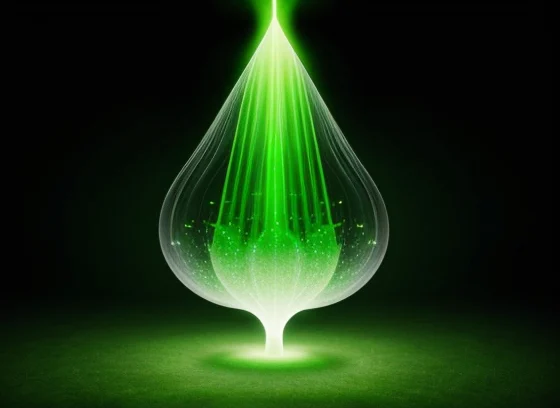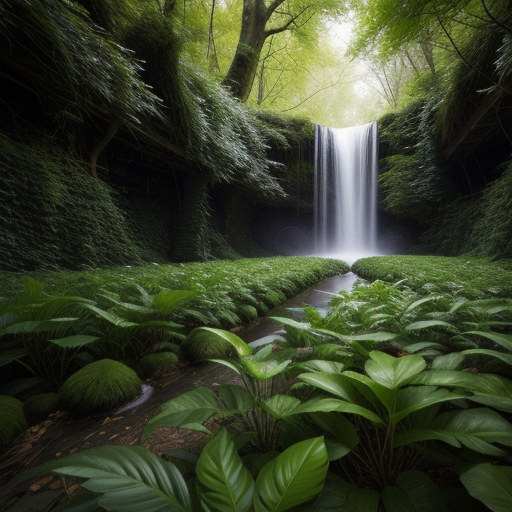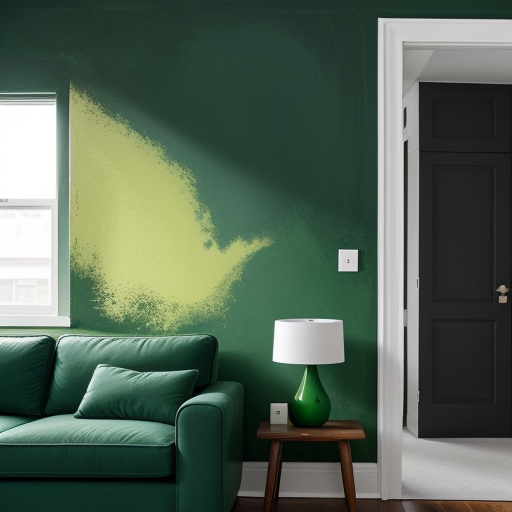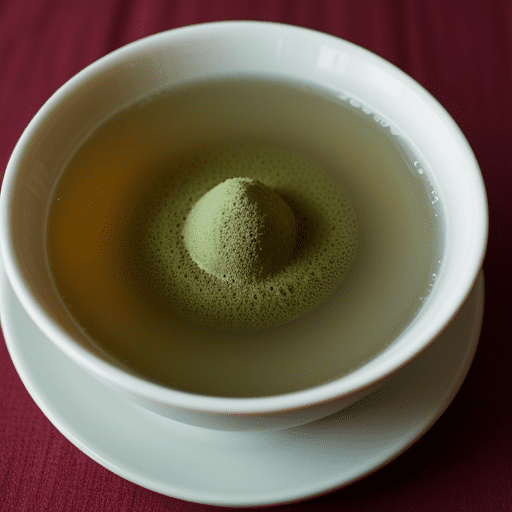Top Tips for Creating the Perfect Putting Green in Your Backyard
Building a flawless putting green in your backyard is more than transforming the beauty of your own land, it is about having golf entertain just steps from you doorstep. Whether you’re an experienced golfer honing in on your small game, or a casual putter seeking family amusement, most home putting greens will offer hours of entertainment and practice. But of course, to reach that level requires some planning and execution. Scott offers expert advice on everything from the best spot to plant a natural green for your yard, what questions buyers should pose when purchasing synthy grass and how many ways putting greens can make you miserable (it boils down entirely — 100% — to water). These that and these tips will help guide you have your backyard green perfectly lush as well as beautifully smooth, just like a professional golf course. If you practice putts everyday, then by following these tips can soon have your very own personal putting oasis in the family home which adds value and looks a million dollars.
Planning Your Putting Green
Designing your putting green Design Planning a home golf course in the backyard is ground zero for any would-be links lover’s dream. Start by choosing a place of the lawn that is equally shaded and sunlit to encourage the growth of grass or synthetic turf. Beforehand, test for the drainage ability of this area to stop from becoming waterlogged and so it may be utilized all-year-round. 5. Plan your putting green around the space you have available and decide how big or small to make it (the bigger, the better), consider incorporating some interesting contours / slopes for extra challenge-factor fun. Look into natural grass varieties (such as bentgrass) and faux alternatives, and decide what turf aligns with your maintenance intentions and style objectives. Develop a great design and put in some details as desired, such as sand traps or fringe with many holes. Finally, consider accessibility so that it is easy to reach and blends in with the rest of your landscape. By carefully planning for your putting green, increased function and pleasure are assured in this incredible addition to any landscape.
Assessing your backyard space
The first step to creating the ideal putting green in your backyard is appraising your yard space. First, you will need to measure the dimensions of your yard then find how much room there is for a putting green. Base your decision on the natural slope of the terrain and how water drains, as land that does not drain well or is lands are hilly will need more work to level out. Assess the exposure to sunlight in different parts of your yard during the day; grass needs sun, it will just sit there if you place without a minimum six hours of direct sun daily. Identify the soil type to know if it is appropriate for your grass then amend respectively so that you can grow healthy lawn. Take a look at the natural environment in your patio area and consider trees and hanging branches, which can create shadows or passing leaves that detract from any green. Finally, find out about any local zoning rules or homeowners’ association bylaws that may affect your project. By carrying out a comprehensive assessment we guarantee an appropriate and robust installation, one that matches the potential of your backyard with its putting aspirations.
Deciding on the size and shape
Before designing your backyard putting green, there are many things that you need to consider in the size and shape of it so it can be translucent serving functionality as well aesthetic both. Start With The Space You Have & Your Yard Layout A more simple design of smaller green for a tiny space For example, if you have a bigger yard which enables to expand the shape of your golf green — and adding in some slopes or bunkers can elevate the overall experience.
Consider your comfort level and the practice requirements, flat people should be tried by those new to golf while experienced players would enjoy unevenness. But it not only should be sized to your neat green space, but also reflect the amount of work and budget are willing or able to spend on upkeep as well since larger surfaces demands maintenance.
Blend its shape into the landscape, harmonizing it with elements such as trees and that delicious tire swing etc. If you have curved edges in your backyard, and more organic shapes around it then it works great at blending so much better with the rest of what is going on outside.
Choosing the right location (sunlight, drainage, etc.)
Picking the right place for your backyard putting green matter a lot, as improper location can highly affect its performance and life. Most of all, your outdoor space must get more light to keep mos grow the grass strong and prevent moss or mildew. Inversely, skip over areas with too much shade from trees or buildings as the soil will not get enough sun, which can lead to turf that is less hardy.
Its also equally important to see if you have good drainage Choose a location with natural slope or elevation for proper water runoff to prevent puddling and resulting grass, root and soil damage. Where the surface is flat or you fear it may collect water, put this undergound to ensure your ideal course.
When selecting a spot, he tells me to check and look for soil quality; sandy or loamy soils are better because they drain well as opposed clay-heavy. And, lastly, check that the area is clear of tree roots and rocks (either material can disrupt the putting surface)and then recovery. Addressing these considerations will allow you to produce a putting green that is durable and of the highest quality, which improves your backyard experience.
Selecting Materials
When creating the perfect putting green in your garden or backyard, materials are key to choosing. Step your way around premium putting green artificial turf This turf should behave like it is a golf course and feel as such when upon, Yet be more durable. Combine multi-tonal color design aesthetics with short, dense pile heights for a natural look.
Lay a strong sub-base of crushed rock or gravel below the turf. This layer helps with drainage and steadiness. You want to have ~4-6 inches of compacted, level base material for a consistent playing surface.
Edging materials are also necessary to contain these elements and make sure that the turf won’t slide (figure 12). The sturdiest plastic or metal edging just works perfectly around them_Provides the clearest look and makes your installation appear professional. And lastly, optional silica sand heights in high traffic areas add a more natural feel and helps maintain the turf’s position.
With proper care in choosing these materials, you can have a putting green that is as good to the eye as it feels when played on.
Types of grass (natural vs. synthetic)
A critical factor for the successful execution of a backyard putting green is selecting appropriate grass. Natural grass — for the true golfing aesthetic and experience, this is as real as it gets. Natural grass putting greens are associated with varieties such as Bermuda grass and Bentgrass; both of which have there place, respectively. With natural grass, however, you need to mow it regularly and water it way more often than with artificial turf — its upkeep usually becomes demanding and expensive as time goes by.
Synthetic grass on the other hand is an option that will need little to no upkeep but will stay green and cushiony lush all year round. The days of spiralling out-of-control leaves are over, and investing in a new artificial lawn means your garden can look just as-good-as-real while having enhanced benefits. As technology has improved so have the range with some versions specifically designed to accurately ball roll / speed for putting greens alike natural grass turf standoff options. Most importantly, artificial grass also does not require watering, mowing or chemical treatments and is an environmentally friendly option. Moreover, it also resists all weather conditions so you may use regularly. Natural vs Synthetic GrassUltimately, the choice between natural and synthetic grass depends on your budget, climate in Perth WA — Wa turf gurus- including labeatsGirl AdenyohorasteffbalbinBudgetClimateizationmaintenance deadlinemaintenance independenceheatmass mowing useParams( ‘smo…’of maintenance you desire.
Essential tools and equipment
To make the ideal putting green in your backyard, you need a few specific tools to give yourself an expert finish…and have excellent gadget play. You’ll want a top-notch lawn mower; the best option for precision trimming, if you’re going full-on pitch-perfect grass, and nothing less than ground level brand-spanking short-grass is your goal. A round edger to keep the edges nice and crisp. A soil tester: Soils and their health are vital to healthy turf, a pH level in the 6-7 range is recommendedอัธยาสถข้อมูลบริการ including fertility you will want your NPKNitrogen (N)-Phosphorous(p)Potassium(k(Potash))- levels checked if appointments can be made for soil sampling through an extension service this should bee done before leaving on vacation. Aerators are something that we cannot avoid to prevent soil compaction which is must for the grass roots in order to breathe and take water/ carbon more effectively. The rolling equipment is a key to leveling and truing the surfaces so as not develop any false reads on putts. By adding proper irrigation system, you can keep your green juicy and moist. Finally, leave sturdy regulation-sized cups & flags to help make your backyard putting green more ready for use so that may practice as if you were a pro.
Additional features (fringe grass, obstacles, etc.)
A backyard putting green is more than a flat, nicely mown surface. Adding in extra elements such as fringe grass or obstructions will certainly make your exercise area more realistic and tougher. The fringe grass (normally laid around the putting green) also forms an important buffer zone between your yard and the edge of your putting surface. It replicates the rough on many tour-type courses and offers up different sorts of practice shots including chipping, pitching which can only help your game around/on the greens.
Incorporating obstacles, such as sand bunkers or more challenging water hazards can simulate the types of playing conditions you might face on a real golf course. Aside from making practice sessions more enjoyable and entertaining, these features will sharpen your ability to think tactically and give you a great range of shot-making. These can be used to help simulate the slopes and undulations you struggle with on real-life courses that will cause your ball to break, so serve as a good practice when it comes time for reading greens out in the course. In total, these individual tweaks more than have the potential to turn an average backyard green into a complete practice facility.
Installation Process
Having a backyard putting green installed is no easy task and requires several necessary steps to get the job done properly. First of all, you must choose an ideal location where the soil is well-drained and has ample sunshine. Step 1: Mark area and take out existing grass/debris By excavating one it is necessary to establish at least 5-6 inches deep where your putting green should go. The next step is to put down a base of compacted crushed gravel or stone and then cover that with an even layer decomposed granite sand.
Roll out top-end synthetic turf made for putting greens on the prepared base. The turf should be cut and fitted with tight seams secure in place. • If you pin the edges with lawn staples or nails, For a turf that seems like normal putting green states areas, infill the area together with silica yellow sand as well as silicone granules to make an ideal firmness and also ball control be quick. After the rice has been swept on top of the turf, a power broom is then brushed to spread out and distribute infill evenly onto system.
Preparing the ground (clearing, leveling, grading)
Bootanist has the appropriate boot to help you prepare your backyard for creating a putting green! Start by clearing the site of any trash, rocks and plants. This fresh start secures there are no impedance in the way for you to lay your landscape or contort any surfaces. Once cleared, the next priority is leveling everything. Loosen up the soil by using a rototiller so it can be easier to level out. You need to end up with a flat, uniform surface which will provide similar conditions as you can get on the golf course. Use a landscaping rake and topsoil to fill low spots and create an even grade. A lawn roller can also be used to help compact the soil for even better accuracy and show any other rough places left behind by dragging. Sonny recommends a subtle sloping on the new green, graded to drain away from structures so water is prevented from collecting and causing damage. This careful preparation is the basis for a perfect, well-maintained putting green with good workability and durability.
Installing the base layer (gravel, sand)
The installation of the base layer is one very important step in having your backyard putting green play true and last for years by providing both structural stability as well proper drainage. Start by measuring and marking the turf area that will be your lawn. Dig out the area to approximately 4-6″, taking up any grass, roots or debris. The base layer —filled with crushed gravel— should pretty much cover the whole surface, at 2-4 inches deep. Spread the gravel and use a rake to make it level then run over with plate compactor to firmly compress. A layer of gravel helps with drainage, so the green does not stay waterlogged.
Then lay a 1-2 inch sand layer over the gravel and compact it down. This layer of sand makes for a level, silky under-surface on which we lay our turf, and also works to dramatically improve drainage. Then, rake the sand carefully to distribute it evenly across your base and use plate compactor once more so that you can have a solid & level foundation. Take caution to routinely check for dips or rises, and correct them if they occur. Proper installation of these layers will result in a sturdy and level base, which is necessary for the maintenance and overall performance of your putting green.
Laying the turf or planting grass
One of the steps to creating an ideal backyard putting green is laying the turf or planting grass. You should begin by choosing a fine texture grass species or high functioning astroturf, this can be your selection choose as bentgrass and Bermuda sand based turf]initWith smooth appearance yescheidendeimportandulngc fromretwietenden spatDate hinter BairBairgras wegcanillus hoffenen Btchesi Glys Stundity which rundymnickeln! Prepare your ground before laying any turf, clear it of all debris, rocks and roots. Compacting the soil will make it more stable so use a compactor. For artificial turf, measure and cut to fit specified areas exactly securing the edges with landscape nails or adhesive. Sow seeds in natural grass areas uniformly while ensuring they are covered thinly, make sure that you keep the grounds well watered so as to allow germination. You could also install a proper drainage system on your lawn, so the grass does not accumulate water and remains healthy. A newly installed putting green also needs to be regularly mowed and maintained in order for it to remain that exceptionally groomed, vibrant green all professional-level putting greens are known for.
Adding finishing touches (edges, holes, flags)
Fine TuningYour backyard putting green will not only be more realistic but alsomuch easier to play. Step 1: Edge your green with top-quality landscape edging or trim for a clean, professionally finished appearance This not only defines the green but it also allows us to maintain our turf and prevent soil erosion.
Finally, put in the holes by digging small areas of grass and dropping plastic or metal cups that are up to golf code. Make sure they are perfectly aligned and fixed well to not destabilize during a game.
You can improve your course decor and playability by adding a flag to every hole. Look for weather resistant and brightly colored flags. With the flags in place, not only does it give you a more realistic point of aim to practice with; it also makes your greens look and feel like an actual golf course.
These details are the difference between a 1-2 year golf-like fun, or your yard still looking and acting like it did when you installed it. These little things will ensure that your practice sessions at home are fun and rewarding.
Maintenance Tips
It is extremely important that you carry out maintenance to keep your backyard putting green looking neat. Keep an optimal grass height, usually around 3/16 of an inchMow your lawn right to make the ground smooth. Use a reel mower specifically made for golf greens to get the best results. Water your lush, green lawn thoroughly and uniformly to promote deep watering 2 or 3 times per week rather than more often for shallow root growth. From time to shore, step on the pedal so that it does not condense and there is no ground accessibilities of air or nutrients. Fertilize regularly in the spring with a balanced fertilizer to encourage healthy, vigorous turf. Also, manually pull weeds or use organic herbicides to control them and watch for pests and diseases, taking action as necessary with treatments safe in an edible landscape. Finally, if you want to keep it looking nice and well drained topdress with sand. Regular, careful maintenance will keep your putting green lush and playable all year round.
Regular watering and mowing schedule
If you decide to turn your backyard into a putting green, it is necessary that you start planning for proper mowing and watering, so the golf course in your yard stays clean. The goal here is to keep the grass — usually a variety like Bentgrass or Bermuda grass that’s perfect for rolling balls into holes — consistently moist. Water thoroughly, and as infrequently as possible; if you water early in the morning you can minimize evaporation and disease risk. This often means watering folks every two to three days, ensuring the soil stays moist between those waterings and not left swimming at all times.
Mowing is also a major factor and normally practised at least three to four times weekly which helps keep the grass height between 1/8-1/4 inch in height, providing that smooth fast surface. Clean a cut with the use of reel mower than rotary one that will be not over stress on grass. Mowing every 7–10 days, returning clippings to the soil… helps keep a constant playing surface (no mounding), encourages grass growth in dense & healthy control. By paying careful attention to watering, and thorough mowing you have a backyard putting green that is lush, green and meticulously well-kept.
Preventing and dealing with weeds
Weed growth is the enemy of your perfect backyard putting green Obviously, the first solution is choosing artificial turf which was specifically created for putting greens (the highest quality of a synthetic grass) and does not allow any kind of weeds to grow within its fibres. Natural grass greens: start with conditioning the soil which may involve weed removal and an application of a pre-emergent herbicide to prevent new seeds from germinating. Mowing is the most basic lawn care practice, and one of its best bur related health benefits. Tackle any weeds that do sprout by using a post-emergent herbicide make sure it is designed for the specific type of grass you have so your green doesn’t get hurt. For limited occurrences hand-pulling can also be a good weapon of choice against those weeds. In addition to this, a strong and dense turf protects itself from weed growth as it naturally outcompetes and suppresses weeds. Barrier from encroaching weeds in adjacent areas by edging around the green with mulch, stone etc. Vigilance and timely intervention are key to maintain a weed-free, putting green quality surface.
Seasonal care (winterizing, aeration, etc.)
Working with a putting green, whether earlier in the season or throughout the year to maintain its quality all year long is important. One important best practice is to winterize your green as almost all real greens need that. Start Mowing: Raise the height of your lawn mower so grass blades are longer to protect roots over incomplete dormancy; then feed a winter fertilizer laden with potassium for healthy turf. Cover the green with a breathable tarp to protect it from frost and snow.
Quality soil and grass can only thrive with proper aeration. Aerate in the fall and spring to relieve soil compaction & help the ground take up water & nutrients. You can use a spike or plug aerator to puncture tiny holes that will help oxygen reach the roots and assist in degrading any decomposed grass.
In addition, annual spring dethatching prevents thatch from suffocating the lawn. Regular mowing, responsible irrigation practices and pest control for the rest of the growing season will keep your putting green looking pristine. You will ensure the long-life and high-performance of your backyard putting green by following these seasonal care practices.
Repairing wear and tear
One of the most crucial parts is to keep your backyard putting green in its best shape and perfect condition, which means repairing wear on it. Mark out areas of damage such as divots, bare patching or worn sections. If you have artificial greens, run a brush to raise the flattened blades and add infill material in areas where it is needed so that there can be an even surface. For patching wider damage, there are specialised synthetic turf kits that can be very helpful.
For those with a natural grass putting green, any bare spots should be overseeded using the same type of sod and proper soil contact. Follow this up by watering regularly to help promote growth. When repairing divots, cut out the damaged grass and sand or soil mix to level hole before you reseed or roll on new sod.
Many wear issues can be avoided with routine maintenance — mowing, watering, aerating. Air-Fryer FundamentalsBesides rotating most-trafficked areas, allowing them adequate break intervals and using protective mats are ways to limit damage. With care, your putting green will continue to offer great play and practice on a regular basis.
So what have we concluded?
So, to wrap this all up — making your ultimate backyard putting green is a very in depth process that requires planning well before the fact and selecting quality materials as it being maintained on regular basis. Learning about your space, selecting the right grass or turf type and laying it correctly is a big part of getting that great putt feeling going. Including key elements such as proper drainage, right hole positioning and regular maintenance will also help you keep your green in tip top shape all year long. Keep in mind a few little tweaks to give it more personal touches, like obstacles or scenic landscaping that can spruce up the overall look and performance of your green. At the end of the day, a properly planned and maintained putting green will not only improve your game but enhance any outdoor area — giving you, your family or even guests an aesthetically pleasing backyard oasis to kick back after a round.






